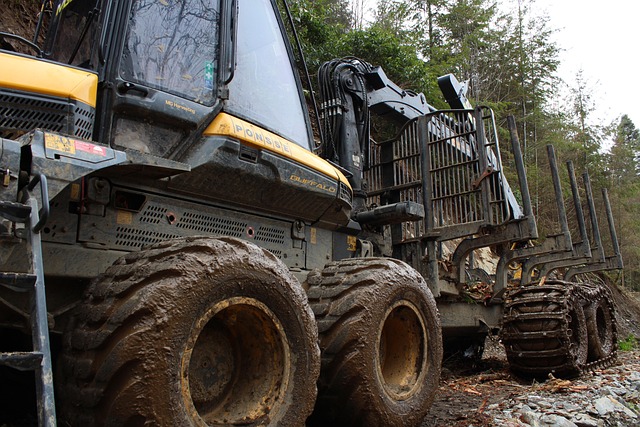In regions frequently hit by earthquakes, high-rise framing solutions are crucial for balancing seismic activity and robust construction. These innovative solutions include advanced engineering principles, materials like steel, concrete mixes, and specialized connectors to enhance building safety and withstand intense ground motions. Future trends promise revolutionary changes with composite materials like carbon fiber and modular construction techniques, aiming to reduce construction time, improve quality control, and create aesthetically pleasing structures that can endure seismic activity.
In regions prone to seismic activity, designing structures that withstand earthquakes is paramount. This article explores the vital role of seismic-resistant framing in ensuring safety and stability for high-rise buildings. We delve into understanding the challenges posed by these areas and highlight how innovative framing techniques mitigate risks. From key components enhancing structural integrity to future trends shaping urban development, discover cutting-edge solutions revolutionizing high-rise framing.
Understanding Earthquake-Prone Regions and Their Challenges
In regions prone to earthquakes, understanding the unique challenges posed by these natural events is paramount. Earthquake-prone areas often face the dual problem of frequent seismic activity and the need for robust construction that can withstand intense shaking. This necessitates a shift towards innovative high-rise framing solutions designed specifically to mitigate damage during earthquakes. The goal is to create buildings that not only remain standing but also protect occupants and preserve structural integrity, even in the face of seismic forces that can reach devastating magnitudes.
These regions require building codes and design standards that prioritize flexibility, strength, and durability. High-rise framing solutions must be adaptable to various geologies and seismic zones while incorporating advanced engineering principles. By embracing modern construction techniques and materials, architects and engineers can develop frameworks that offer enhanced safety features, ensuring the resilience of structures against earthquake vibrations.
The Role of Seismic-Resistant Framing in High-Rise Buildings
In earthquake-prone regions, high-rise buildings pose unique challenges and require robust structural solutions to ensure safety and resilience. Seismic-resistant framing plays a pivotal role in mitigating the devastating effects of these natural disasters. By implementing specialized construction techniques and materials, engineers can create high-rise framing solutions that withstand intense ground motions, reducing potential damage and saving lives.
These advanced framing systems are designed to dissipate seismic energy, preventing structural collapse. Key features include rigid connections between columns and beams, moment-resisting frames, and the use of ductile materials like steel and specialized concrete mixes. Such innovations ensure high-rise buildings can resist strong earthquakes, providing a safer environment for occupants and facilitating faster recovery efforts post-disaster.
Key Components of Effective Seismic-Resistant Framing Designs
Effective seismic-resistant framing designs for earthquake-prone areas incorporate several key components to ensure structural integrity and safety during intense seismic activities. One of the primary considerations is the use of robust materials, such as advanced concrete and steel alloys, that can withstand significant lateral forces. These materials are often combined in innovative ways, like reinforced concrete columns and beams, to create a strong foundation for high-rise framing solutions.
Additionally, specialized connectors and fastenings play a vital role in maintaining the structural integrity of buildings. These components include seismic joints, dampers, and various types of ties that allow for controlled movement during an earthquake while preventing excessive displacement. Advanced engineering techniques, such as moment-resisting frames and rigid-flex systems, are also integrated into these designs to optimize performance under dynamic loading conditions, making them indispensable features in high-rise framing solutions for seismic zones.
Future Trends and Innovations in High-Rise Framing Solutions
As we move forward, future trends in high-rise framing solutions promise to revolutionize earthquake-resistant construction. One prominent innovation is the integration of advanced composite materials, such as carbon fiber and fiberglass, which offer exceptional strength-to-weight ratios. These materials can be strategically incorporated into building frames, enhancing structural integrity without significantly increasing weight, a critical factor in high-rise structures.
Another exciting development is the adoption of modular construction techniques. Pre-fabricated components can be designed to withstand seismic activity and then assembled on-site, significantly reducing construction time and potential damage during assembly. This approach also promotes better quality control and allows for more complex geometric designs, contributing to aesthetically pleasing and functional high-rise buildings in earthquake-prone areas.
In earthquake-prone areas, implementing robust seismic-resistant framing designs is paramount for ensuring structural integrity and public safety. This article has explored key aspects of high-rise framing solutions, from understanding regional challenges to the role of specialized designs in mitigating risks. By focusing on critical components and embracing future innovations, architects and engineers can continue to enhance resilience in these vulnerable landscapes. These efforts not only safeguard lives but also contribute to the sustainable development of vibrant communities capable of withstanding seismic events.
